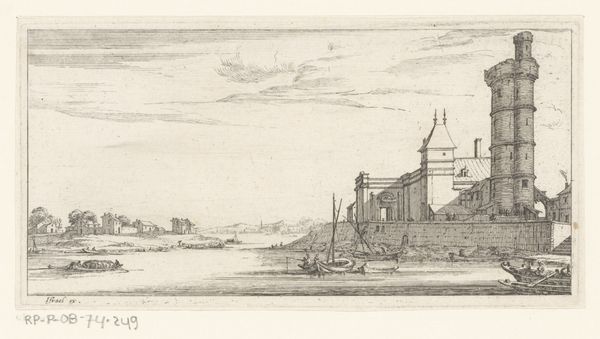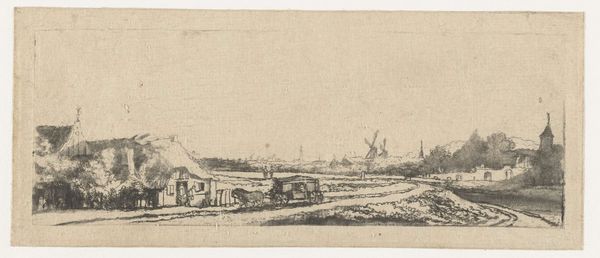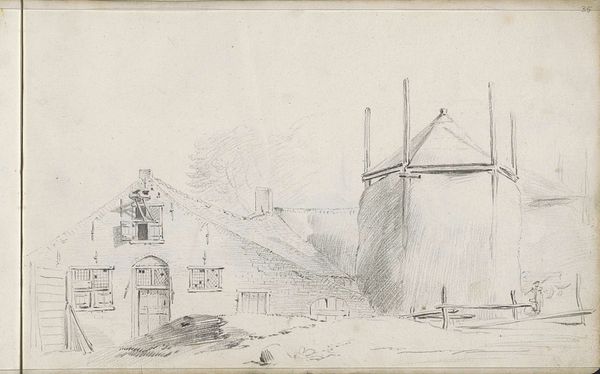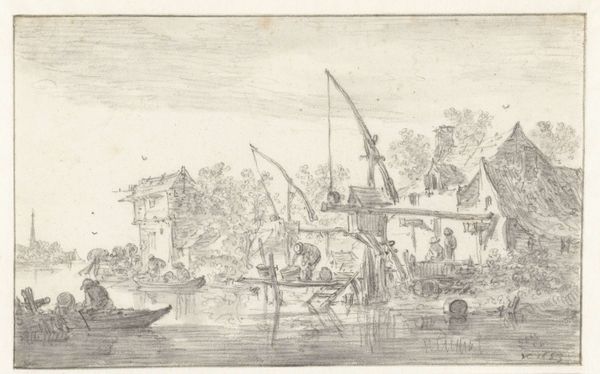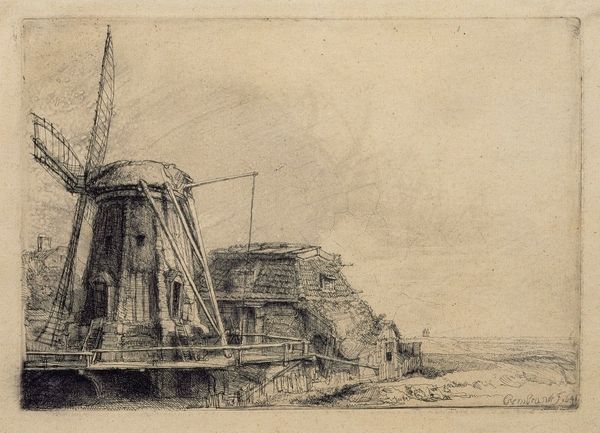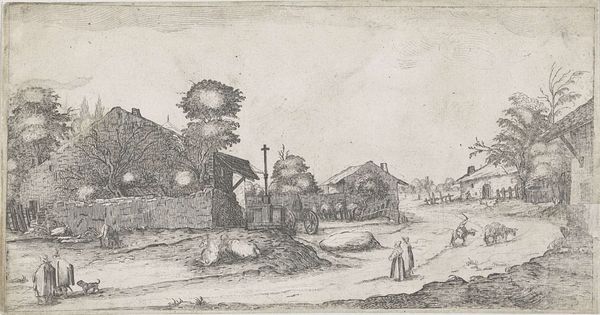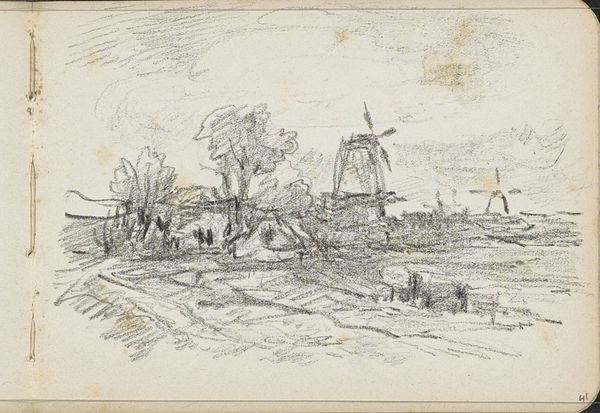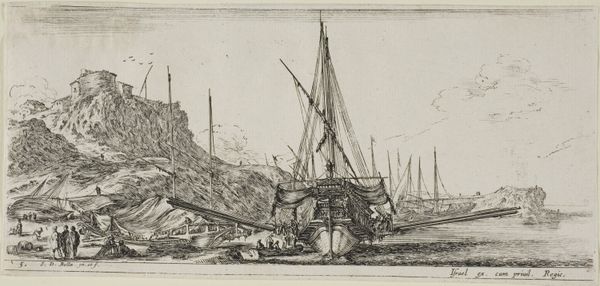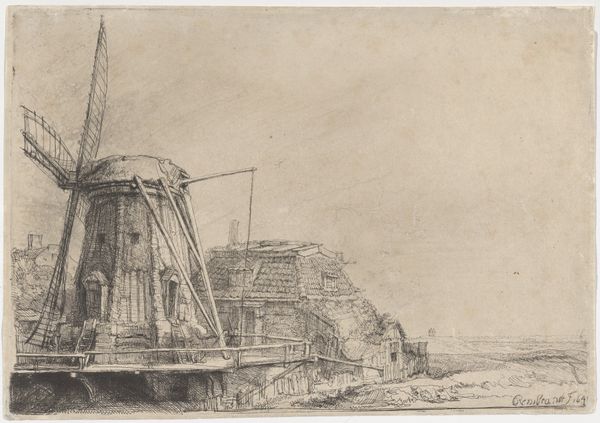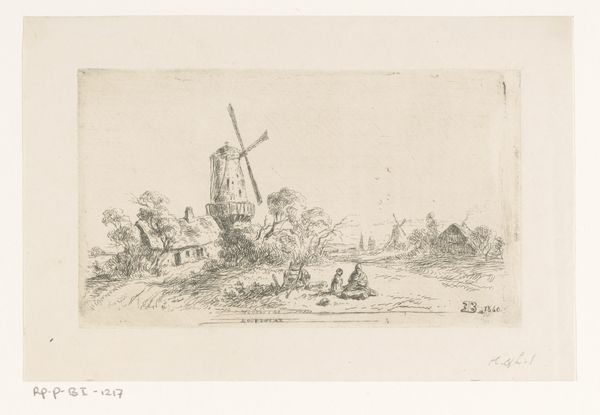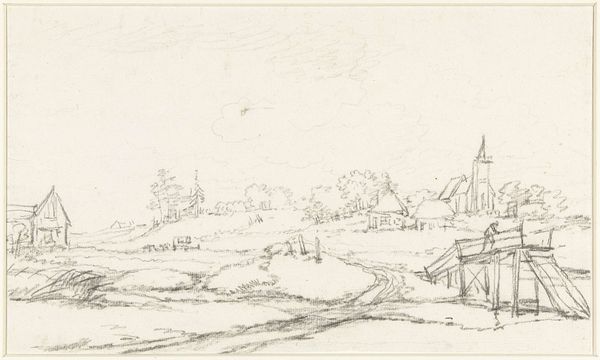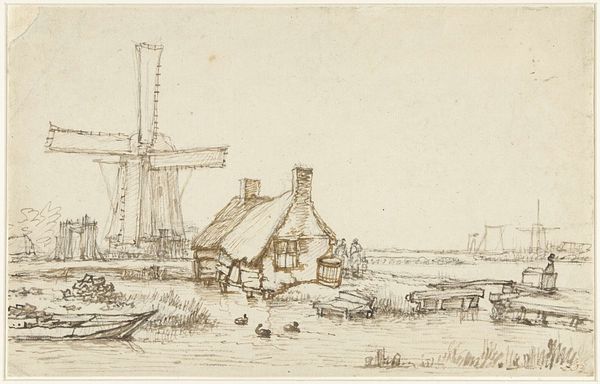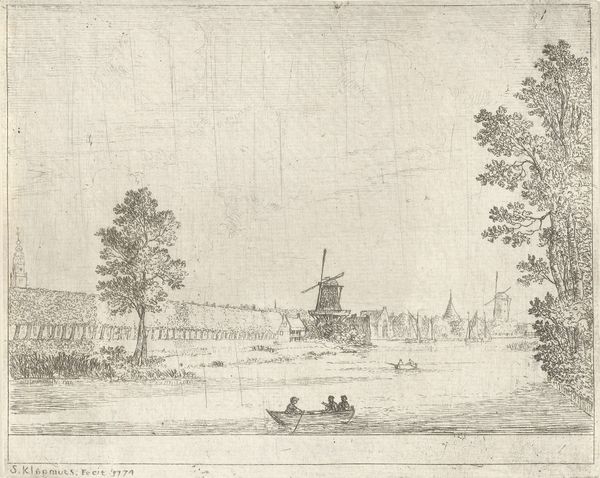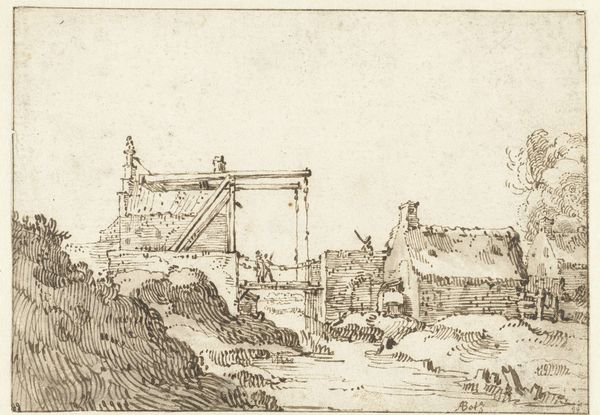
print, etching
#
dutch-golden-age
# print
#
etching
#
pencil sketch
#
old engraving style
#
landscape
#
genre-painting
#
realism
Dimensions: height 117 mm, width 148 mm
Copyright: Rijks Museum: Open Domain
Curator: Immediately, I am struck by the light in this print, it almost seems to radiate from the paper itself. Editor: Indeed, this delicate etching from 1774, titled "Molen en huizen langs een landweg", was crafted by Simon Klapmuts. As we observe, we see how this landscape situates itself squarely within a historical lineage of Dutch Golden Age art, but we are not exactly in it either. Curator: Yes, while we're observing its position inside Dutch Golden Age art, this print gives off this remarkable sense of calmness to the viewer, no dramatic narrative but a window to ordinary rural life, something tangible that everyone is going to have in contact with, directly or indirectly. The technique here with the etching allows to the composition being less dramatic and maybe, a bit crude compared to others of that period, because of it I feel closer to it. I am no noble enjoying his terrain! Editor: Absolutely, that sense of accessibility speaks volumes about Klapmuts's intent. In 1774, we're nearing the end of the Golden Age's direct influence, but the appetite for such scenes continued, even thrived as these became records of a changing countryside, feeding the public imaginary of times lost. Etchings such as this circulated widely, democratizing images of rural life in ways paintings never could, it's an artwork easy to mass produce. Curator: Exactly. And notice the materiality itself. The lines, so fine and precise, are a testament to the artist's skill, his craftsmanship with acid and metal is on display here and speaks directly of work hours to mass produce copies! The print medium makes the images widely available, to many social spheres and wallets I guess. Editor: Looking closer, observe the figures dotted within the scene. It’s clear this wasn't just about picturesque scenery. Instead, there is also an element of "genre-painting", as a recording of common folks amidst their routines. The windmill in particular becomes quite central, not merely for aesthetic charm but, because it stood as the backbone of rural economics—the material and resources that shaped the common folk. Curator: You’re right. And that brings up something: The figures are almost more a structural component here—anchoring us as a part of that same landscape, the people and structures becoming something united as raw material. We could interpret this whole thing like a diagram. The work’s function might then be tied with something didactic for what common population meant. Editor: Considering the socio-political context in 1774, amidst shifts towards industrialization, maybe that rustic portrayal of mills and the open country functioned ideologically. This idyllic representation provided a counterpoint to more chaotic urban life, as mass distribution product through etchings! Curator: Interesting thoughts. Editor: And with that, perhaps this offers us both different and useful perspectives on how to engage with "Molen en huizen langs een landweg" today!
Comments
No comments
Be the first to comment and join the conversation on the ultimate creative platform.
